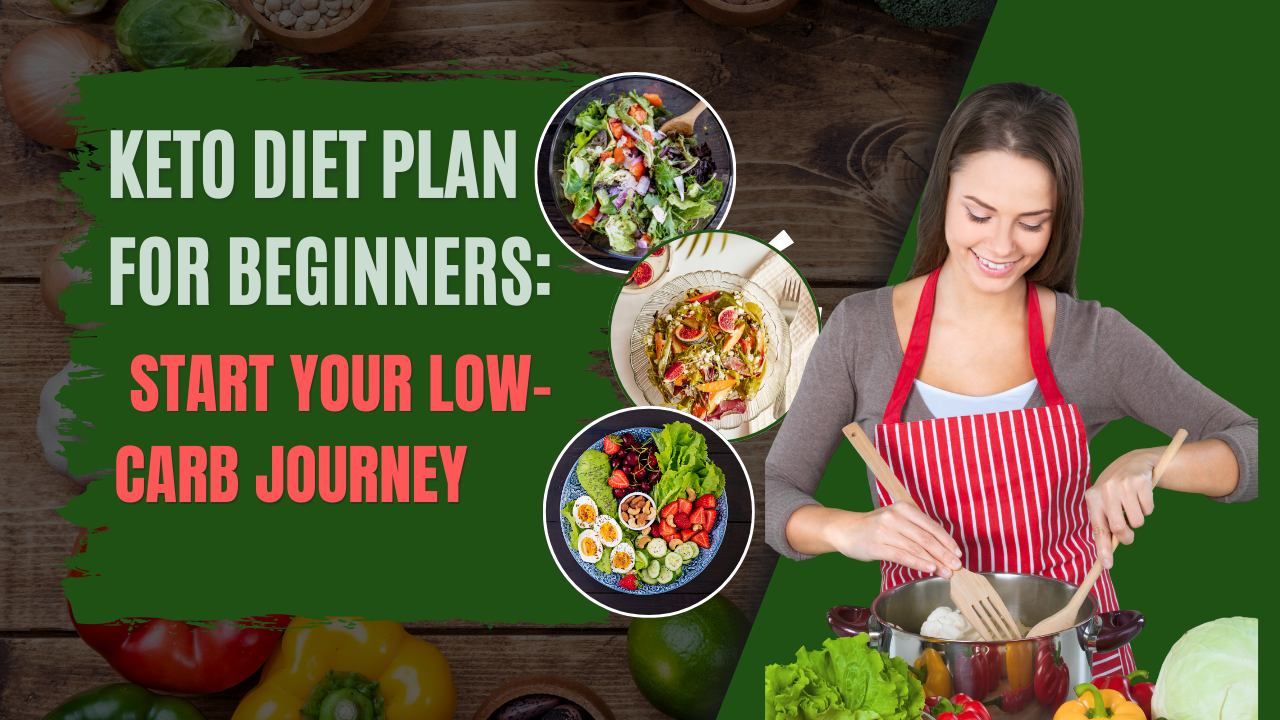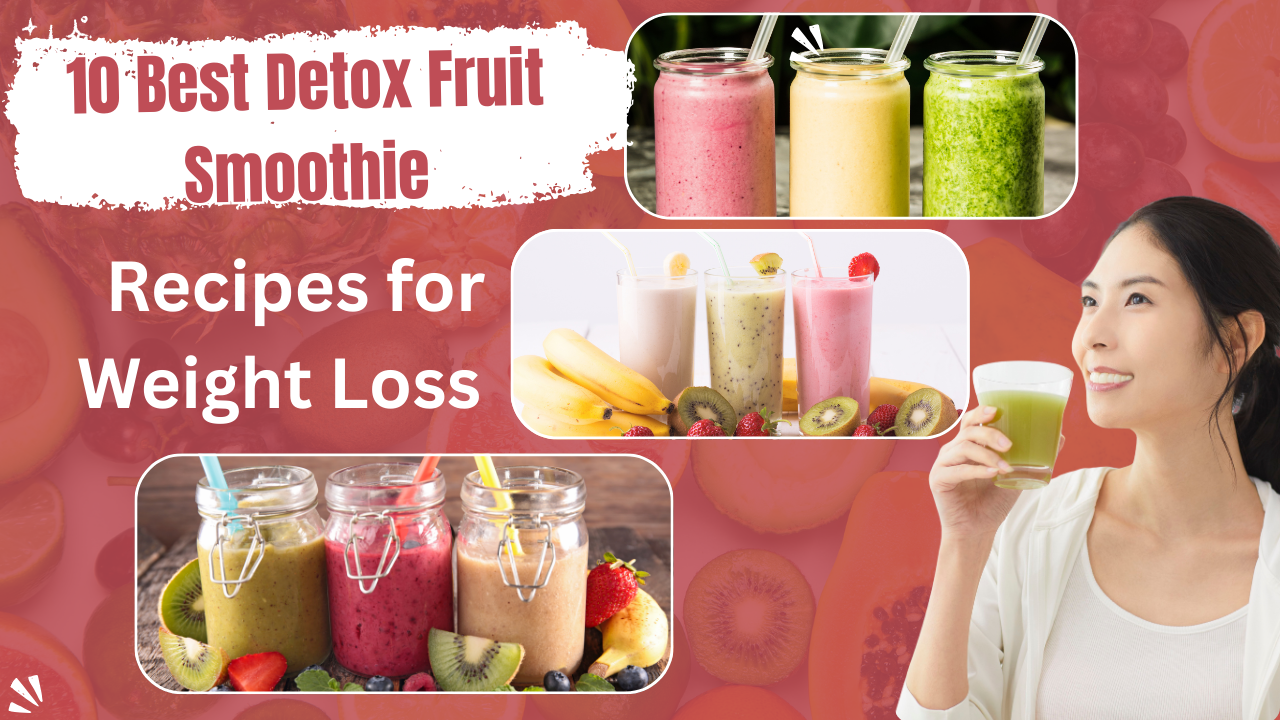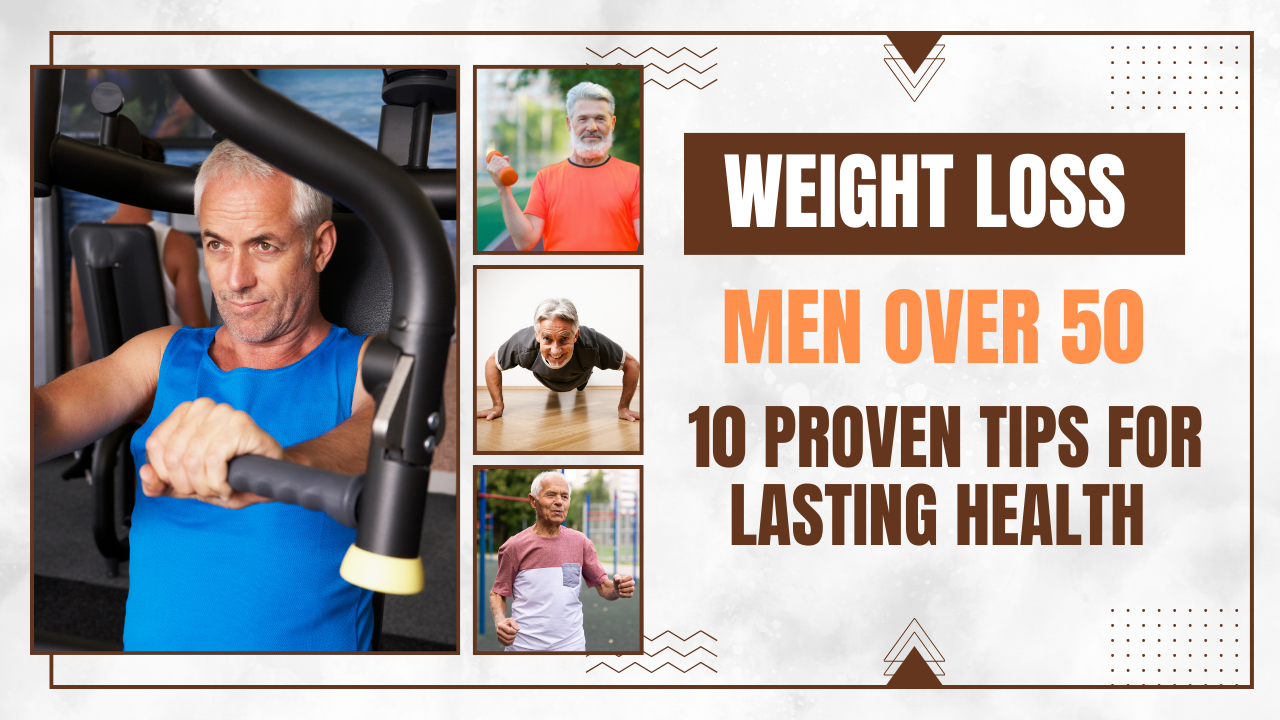keto diet plan for beginners can feel exciting yet overwhelming. The ketogenic (keto) lifestyle is built on a low-carb, high-fat, and moderate-protein eating pattern that shifts your body into a fat-burning state called ketosis. Instead of relying on glucose from carbohydrates, the body starts using ketones produced from fat for energy. This unique metabolic change can promote weight loss, improve mental clarity, and stabilize blood sugar levels.
For anyone new to keto, understanding the basics is crucial. A keto diet plan for beginners focuses on eating nutrient-dense fats like avocados, olive oil, nuts, seeds, and fatty fish while limiting carbs to around 20–50 grams per day. By reducing carbs and increasing fat, your body adapts to burning fat efficiently.
With the right approach, this diet can be sustainable and enjoyable. The following guide shares the top eight tips, essential benefits, and practical ingredient lists to help you succeed with a keto diet plan for beginners.

What is a Keto Diet Plan for Beginners
A keto diet plan for beginners is a low-carb, high-fat eating strategy that shifts the body’s primary energy source from glucose to ketones. By drastically reducing carbohydrate intake to around 20–50 grams per day, the body enters a metabolic state called ketosis. In this state, fat becomes the main source of fuel, helping with weight loss and improved energy. Beginners focus on healthy fats like avocado, coconut oil, and olive oil while consuming moderate protein and minimal carbs.
Unlike traditional diets that rely on calorie restriction, a keto diet plan for beginners emphasizes food quality and macronutrient balance. Meals typically include fatty fish, eggs, nuts, seeds, and low-carb vegetables such as spinach or cauliflower. This combination promotes steady energy without blood sugar spikes.
For someone new to keto, understanding the basics is crucial. Learning about macronutrient ratios, hydration needs, and proper food choices ensures a smooth transition into ketosis and lasting success.
Why Choose a Keto Diet Plan for Beginners
The primary reason people start a keto diet plan for beginners is weight loss. When the body burns fat for energy instead of carbohydrates, fat stores naturally decrease, leading to consistent and sustainable weight reduction. This process also helps reduce cravings and stabilize appetite, making it easier to maintain a calorie deficit.
Beyond weight loss, a keto diet plan for beginners offers other health benefits. Many individuals experience improved mental clarity, balanced blood sugar levels, and better heart health when following a clean, nutrient-rich keto lifestyle. Lowering carbs reduces insulin spikes, which supports energy stability throughout the day.
This diet is especially appealing for beginners seeking quick results and long-term lifestyle improvements. With proper planning, keto can improve metabolism, enhance physical performance, and decrease inflammation, making it a powerful option for overall wellness.
When to Start a Keto Diet Plan for Beginners
The best time to begin a keto diet plan for beginners is when you’re fully prepared with the right mindset, knowledge, and grocery essentials. Planning meals, stocking up on keto-friendly ingredients, and understanding potential side effects like “keto flu” can make the first week smoother.
Starting during a period of reduced social obligations can also help. The initial adjustment phase may involve fatigue or cravings, so having a quiet schedule allows you to focus on your new eating habits. Many beginners choose to start on a weekend or during a vacation to monitor their body’s response.
Seasonal changes or personal goals, such as before a special event or to kick-start a fitness journey, can motivate you to begin. A well-prepared keto diet plan for beginners ensures a steady transition, making it easier to achieve long-term success.
How Does a Keto Diet Plan for Beginners Work
A keto diet plan for beginners works by limiting carbohydrates to force the body into ketosis. Normally, the body burns glucose from carbs for energy. When carbs are restricted, insulin levels drop and the liver produces ketones from stored fat. These ketones become the new energy source, fueling the brain and muscles more efficiently.
This metabolic shift promotes fat loss, reduces hunger, and stabilizes blood sugar levels. By prioritizing fats like avocado, coconut oil, and nuts, and including moderate protein, beginners can maintain ketosis while enjoying satisfying meals. Tracking macronutrients ensures the correct balance of fats, proteins, and carbs.
As the body adapts, energy levels increase and mental clarity improves. Over time, the keto diet plan for beginners helps train the body to burn fat consistently, creating lasting weight loss and enhanced overall health when followed carefully.
Top tips on keto diet plan for beginners
Understand the Basics of Ketosis
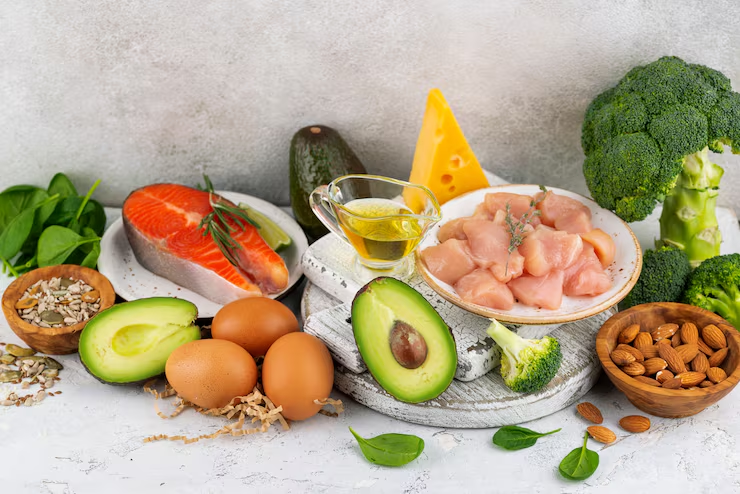
Learning how ketosis works is the foundation of a successful keto diet plan for beginners. Ketosis occurs when your carbohydrate intake is low enough to deplete glycogen stores, forcing the body to burn fat for energy. Typically, this requires consuming 70–75% of calories from fat, 20–25% from protein, and only 5–10% from carbs.
Knowing these ratios allows you to design meals that fit the keto framework. Avoid grains, sugary snacks, and starchy vegetables while prioritizing healthy fats and moderate proteins. Tracking macros through apps can help beginners stay within the recommended carb range to achieve ketosis faster.
A clear understanding of ketosis helps you avoid common mistakes like eating too much protein or hidden carbs. By mastering the science behind it, a keto diet plan for beginners becomes easier to maintain, leading to steady weight loss and better energy levels.
Key Ingredients
Healthy fats: Avocado, coconut oil, olive oil
Proteins: Eggs, chicken, salmon
Low-carb vegetables: Spinach, zucchini, cauliflower
Benefits
Promotes fat burning
Reduces sugar cravings
Improves mental clarity
Stock Up on Keto-Friendly Ingredients
Preparation is key for a successful keto diet plan for beginners. Before starting, stock your pantry and fridge with keto-approved foods to avoid reaching for high-carb snacks. A well-planned grocery list ensures you always have the right ingredients for quick meals.
Focus on whole, unprocessed items such as grass-fed meats, fatty fish, eggs, leafy greens, nuts, seeds, and full-fat dairy. Replace traditional cooking oils with coconut oil, ghee, or avocado oil. Keeping these staples on hand reduces the temptation to cheat.
Meal prepping also saves time and prevents carb slip-ups. Prepare boiled eggs, chopped vegetables, and cooked meats for easy access during busy days. By organizing your kitchen with keto essentials, a keto diet plan for beginners becomes stress-free and convenient.
Key Ingredients
Proteins: Chicken thighs, turkey, beef
Fats: Butter, cheese, macadamia nuts
Snacks: Pork rinds, olives, almond flour
Benefits
Reduces meal prep stress
Prevents accidental carb intake
Encourages consistent eating habits
Monitor Your Macros Carefully
Tracking macronutrients—fats, proteins, and carbs—is essential in a keto diet plan for beginners. Maintaining the correct ratios ensures your body stays in ketosis. Apps like Carb Manager or MyFitnessPal can simplify this process.
Carbs should remain very low (20–50 grams daily), while fats supply the majority of calories. Too much protein can raise insulin levels and kick you out of ketosis. Beginners often underestimate hidden carbs in sauces, condiments, and drinks, making macro tracking critical.
Regularly monitoring macros helps identify patterns that work best for your body. Over time, you’ll learn which foods keep you satisfied while staying within limits, making a keto diet plan for beginners both effective and sustainable.
Key Ingredients
Low-carb fruits: Raspberries, blackberries
High-fat dairy: Heavy cream, cream cheese
Protein: Salmon, tuna, eggs
Benefits
Ensures faster ketosis
Supports steady weight loss
Reduces risk of carb overload
Stay Hydrated and Balance Electrolytes

Hydration is often overlooked in a keto diet plan for beginners. The keto lifestyle causes the body to release more water and electrolytes due to reduced insulin levels. Without proper fluid intake, dehydration and symptoms of “keto flu” can occur.
Drink at least 8–10 glasses of water daily and replenish electrolytes with sodium, magnesium, and potassium. Bone broth, leafy greens, and salted nuts are excellent sources. Consider adding a pinch of Himalayan salt to water to maintain mineral balance.
Proper hydration helps reduce fatigue, headaches, and muscle cramps while supporting healthy digestion. Staying hydrated ensures a smoother transition into ketosis, making a keto diet plan for beginners more comfortable and effective.
Key Ingredients
Electrolyte sources: Spinach, kale, pumpkin seeds
Drinks: Herbal tea, lemon water
Supplements: Magnesium citrate, potassium salts
Benefits
Reduces keto flu symptoms
Supports energy and focus
Improves digestion
Embrace Healthy Fats
Fat is the primary fuel in a keto diet plan for beginners, but quality matters. Choose nutrient-dense fats that promote heart health and satiety. Avoid trans fats and highly processed oils that can cause inflammation.
Incorporate sources like avocados, olive oil, grass-fed butter, fatty fish, and nuts. Cooking with coconut oil or ghee provides medium-chain triglycerides (MCTs) that quickly convert into ketones, boosting energy.
Consuming healthy fats not only fuels ketosis but also enhances nutrient absorption and hormone balance. By focusing on clean, high-quality fats, a keto diet plan for beginners supports long-term wellness.
Key Ingredients
Fats: Avocado, coconut oil, ghee
Fish: Salmon, sardines
Nuts: Macadamia, almonds
Benefits
Sustains energy levels
Promotes fat burning
Supports heart health
Add Low-Carb Vegetables
Vegetables provide essential fiber, vitamins, and minerals in a keto diet plan for beginners. However, not all veggies are keto-friendly. Stick to low-carb options to avoid disrupting ketosis.
Leafy greens like spinach, kale, and arugula are excellent choices. Cruciferous vegetables such as broccoli, cauliflower, and zucchini offer fiber while keeping carbs low. Avoid high-carb vegetables like potatoes, corn, and carrots.
Including low-carb vegetables in every meal improves digestion, supports gut health, and keeps meals colorful and satisfying. Balanced vegetable intake makes a keto diet plan for beginners more nutrient-rich and sustainable.
Key Ingredients
Leafy greens: Spinach, lettuce, kale
Cruciferous veggies: Cauliflower, broccoli
Herbs: Cilantro, parsley, basil
Benefits
Provides essential micronutrients
Supports gut health
Adds fiber for satiety
Plan for Social Events and Eating Out
Maintaining a keto diet plan for beginners can be challenging when dining out or attending social events. Planning ahead prevents accidental carb intake.
Check restaurant menus online to find keto-friendly meals like grilled meats, salads, or bun-less burgers. Request substitutions such as extra vegetables instead of fries. Inform friends or hosts about your dietary preferences to avoid pressure.
Carrying keto snacks like nuts or cheese can help when options are limited. By staying prepared, you can enjoy social gatherings without sacrificing your keto diet plan for beginners.
Key Ingredients
Portable snacks: Cheese sticks, beef jerky
Restaurant choices: Grilled fish, salads with olive oil
Drinks: Sparkling water, unsweetened iced tea
Benefits
Reduces temptation
Keeps ketosis on track
Builds confidence in public settings
Listen to Your Body and Adjust

Every individual responds differently to a keto diet plan for beginners. Monitoring how your body reacts helps fine-tune your approach for maximum benefits.
Pay attention to signs like energy levels, hunger patterns, and mental clarity. Some people may need slightly higher protein or more fiber. Regular blood ketone tests can help determine if adjustments are needed.
Flexibility ensures long-term success. If you experience prolonged fatigue or digestive issues, modify your fat or carb intake gradually. Personalizing your keto diet plan for beginners leads to lasting health improvements.
Key Ingredients
Tracking tools: Ketone meter, food journal
Gut health aids: Probiotic yogurt, chia seeds
Adaptable foods: Eggs, leafy greens, nuts
Benefits
Promotes sustainable weight loss
Prevents nutrient deficiencies
Encourages mindful eating
Overall Benefits of a Keto Diet Plan for Beginners
Rapid weight loss through fat burning
Stabilized blood sugar and insulin levels
Reduced hunger and cravings
Improved mental clarity and focus
Enhanced energy and endurance
Better heart health with healthy fats
Decreased inflammation
Sample Keto Ingredient List
Proteins: Chicken, beef, salmon, turkey, eggs
Fats: Olive oil, coconut oil, ghee, butter, avocado
Vegetables: Broccoli, cauliflower, zucchini, spinach
Snacks: Almonds, walnuts, cheese, pork rinds
Drinks: Herbal tea, black coffee, sparkling water
Sample Daily Meal Plan for Beginners
A practical keto diet plan for beginners often includes three main meals and one or two snacks to maintain energy and satiety. Here’s an example:
Breakfast: Scrambled eggs with spinach cooked in butter and a side of avocado.
Snack: A handful of macadamia nuts or cheese cubes.
Lunch: Grilled salmon over a bed of mixed greens with olive oil and lemon dressing.
Snack: Celery sticks with almond butter.
Dinner: Roasted chicken thighs with cauliflower mash and sautéed zucchini.
This sample demonstrates how to balance fats, moderate protein, and low carbs while keeping meals satisfying. Adjust portions based on hunger and activity levels.
Exercise Tips for Beginners
Exercise complements a keto diet plan for beginners by enhancing fat burning and maintaining muscle mass. Start with light to moderate activities like walking, swimming, or yoga during the first two weeks to let your body adjust to ketosis.
Strength training can be added gradually to preserve muscle while losing fat. Focus on compound movements like squats, push-ups, and rows to engage multiple muscle groups. High-intensity workouts can be introduced later as energy levels stabilize.
Always listen to your body. During adaptation, fatigue is normal, but it should improve within 1–2 weeks. Combining exercise with a keto diet plan for beginners accelerates fat loss, boosts energy, and improves overall wellness.
Tips for Sustainable Weight Loss
Sustainability is key in a keto diet plan for beginners. Rather than extreme restriction, focus on gradual changes that fit your lifestyle. Track progress weekly using body measurements, energy levels, or ketone readings instead of obsessing over the scale.
Incorporate variety to prevent boredom. Try different protein sources such as eggs, fish, chicken, or tofu, and rotate low-carb vegetables to keep meals exciting. Using spices, herbs, and keto-friendly sauces adds flavor without extra carbs.
Mindful eating is crucial. Eat slowly, enjoy flavors, and stop when satisfied. Sustainable practices in a keto diet plan for beginners make weight loss more consistent and help maintain results long-term.
Conclusion
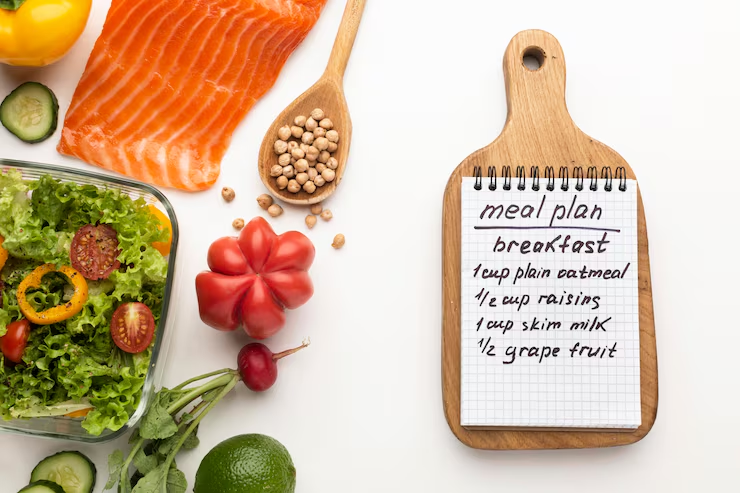
Adopting a keto diet plan for beginners is more than just changing what you eat—it’s a lifestyle shift that transforms how your body uses energy. By focusing on high-quality fats, moderate proteins, and minimal carbs, your metabolism switches to fat burning, leading to impressive health benefits. With careful planning and the right ingredients, keto can be delicious and satisfying.
Remember, patience and consistency are key. Everyone experiences the keto journey differently, so listen to your body and adjust as needed. Embrace hydration, track your macros, and choose nutrient-dense foods for lasting results.
Whether your goal is weight loss, mental clarity, or improved health, a well-structured keto diet plan for beginners provides the roadmap. With these eight tips, you can confidently start and maintain a lifestyle that supports long-term wellness and vitality.
FAQs
1. How long does it take to enter ketosis on a keto diet plan for beginners?
Most people enter ketosis within 3–7 days of restricting carbs to 20–50 grams per day. Consistency with low carbs and healthy fats accelerates the process.
2. Can I exercise while following a keto diet plan for beginners?
Yes. Light to moderate exercise is encouraged. Initially, you may experience fatigue, but energy levels typically improve after adapting to ketosis.
3. Are there any side effects of starting a keto diet plan for beginners?
Some beginners experience “keto flu,” which includes fatigue, headaches, and irritability. Staying hydrated and replenishing electrolytes minimizes these effects.
4. Can vegetarians follow a keto diet plan for beginners?
Absolutely. Vegetarians can enjoy eggs, cheese, tofu, nuts, seeds, and low-carb vegetables while focusing on plant-based fats like coconut oil and avocado.
5. How can I tell if my keto diet plan for beginners is working?
Signs of success include weight loss, reduced hunger, mental clarity, and increased energy. Testing blood or urine ketone levels confirms ketosis.
